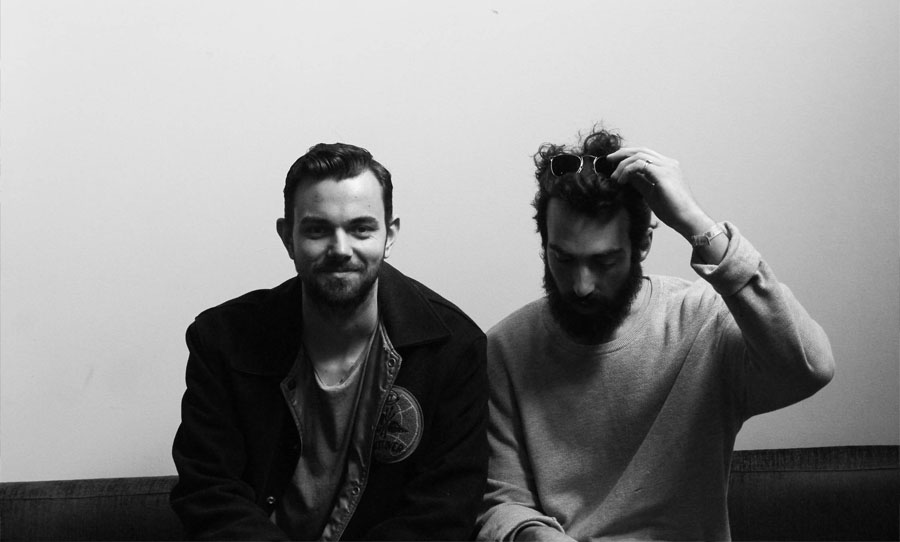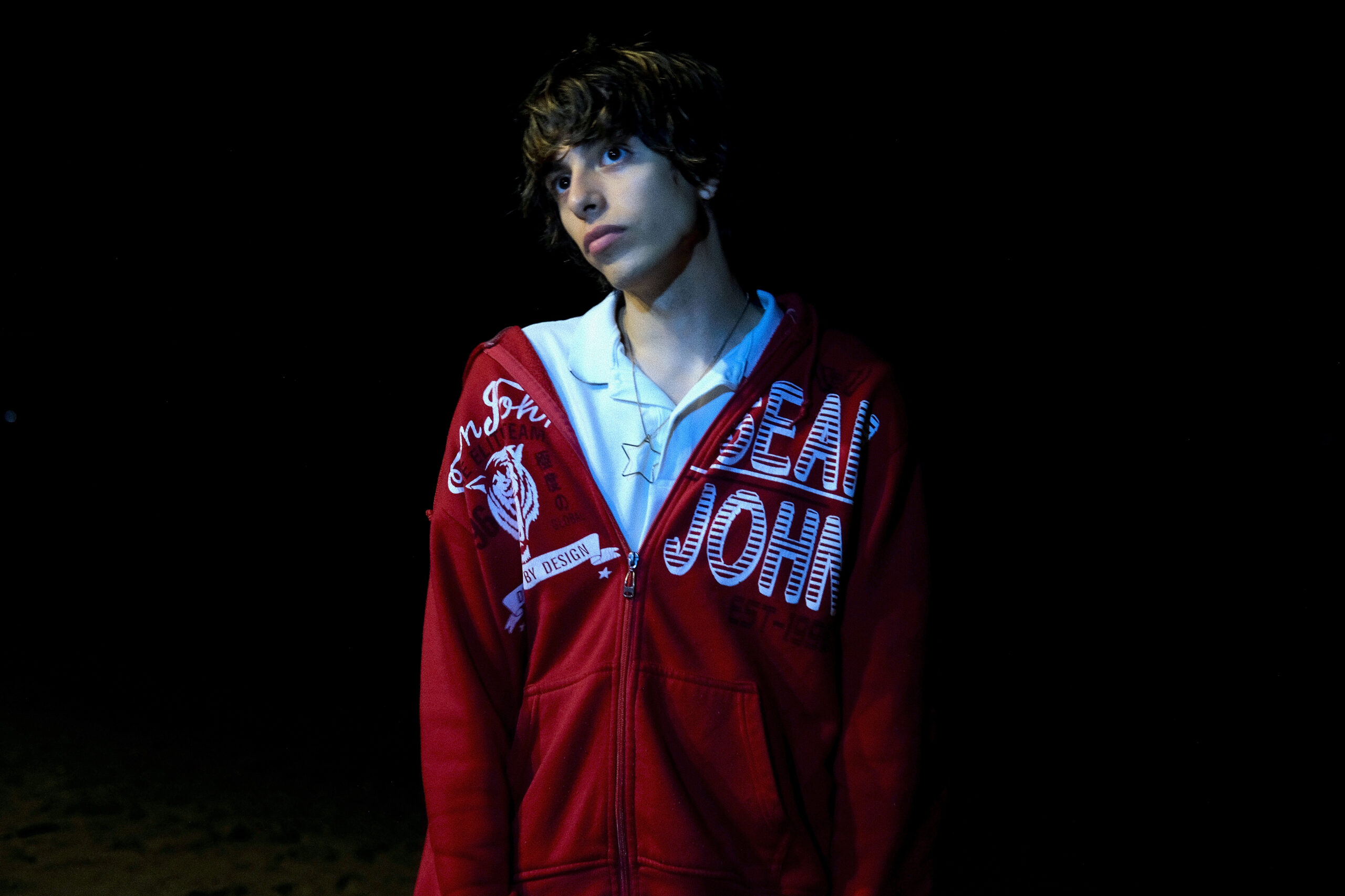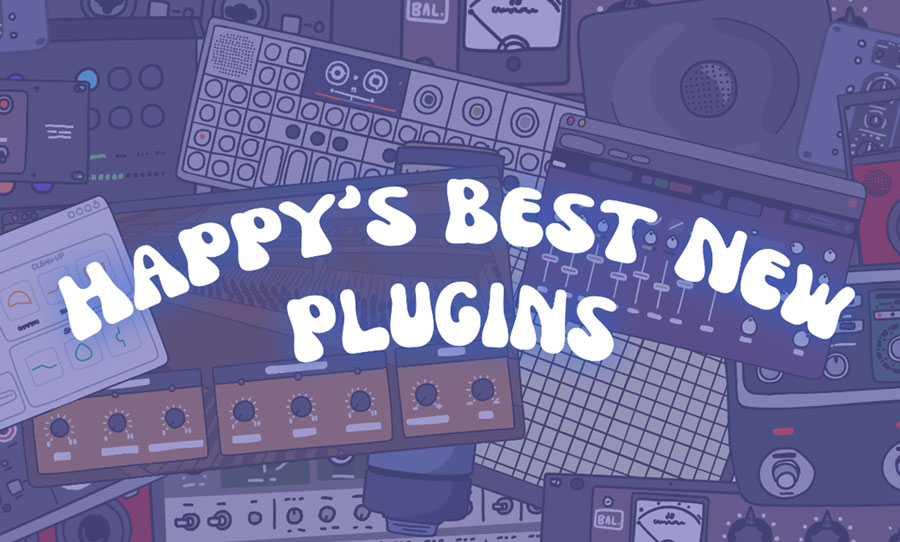When No Mono first fluttered into our lives with their debut single Butterflies, we knew Tom Iansek and Tom Snowdon were onto something special. Since then they’ve performed at the Sydney Opera House and Splendour In The Grass, and released their superb debut album Islands (Part 1).
Which is a curiously open-ended name for an album, really. Speaking to the Toms at BIGSOUND, they assured me that much more music was on its way, and shared a few insights into how they craft such spine-tingling, ambiguous music.

According to Tom Snowdon and Tom Iansek, the story of No Mono is far from over. We spoke at BIGSOUND to find out what’s in store.
HAPPY: What struck me first about No Mono was how formless the music feels. I’m pretty frankly clueless about how songs like yours come together, so is there a point or person where you began or usually begin with?
TOM SNOWDON: I wouldn’t say there’s a formula, but we generally really enjoy the experimenting process with sounds or an idea. So there might be, like, a chord movement or a progression, typically on a piano or a vocal line, or whatever. That idea then becomes the basis of the song as it ends up, and often it’s just a process of experimenting with different sounds, movements and instruments to try and uncover what it is that was so special about that first thing. So it’s often a spark, something Tom will write or I’ll write and we’ll go ‘that’s cool, there’s something in it’, and we’ll try and explore it and craft it until it’s arranged in a way that really represents that.
TOM IANSEK: We’re both really interested in working intuitively, and I guess by that I mean being willing to be led wherever an idea wants us. Sometime that leads us into… we’ll both sit down at a piano and craft a structure like that, or it could be a song that gets pieced together through multiple edits on the computer. We don’t really want to push ourselves into one way of making a song, it seems like each of them needs to have their own lives, wants to tell their own story, and you just to be open to how they want to come out.
For example a song that’s from the record we released, Butterflies, was originally written on a piano and we felt like it had such an attitude to it that the piano really didn’t do it justice. So we just followed that interest in making it a bit grittier and ended up at this point, with these tremolo synths. Typically when we arrive at this point, as we did with Butterflies, we go ‘oh, that’s it’.
HAPPY: I actually had a question I was going to ask later, about that song specifically. I wanted to know what synth you were playing.
TOM SNOWDON: There’s a couple actually.
TOM IANSEK: It’s a [Sequential] Prophet and an [Korg] MS-20.
HAPPY: So it’s doubled?
TOM IANSEK: Yeah but it’s quite simple. Then just a piano and a tremolo plugin. But it was funny, you played it on the synth and suddenly it had a really different vibe. And as soon as I heard it on the synth I thought ‘it has to pulse somehow’. If you take the tremolo off it, it’s like… ugh. Everything’s kind of out of time, it’s a bit weird sounding, like a wall of white noise almost.
TOM SNOWDON: And there was something in the original one we wrote, the chorus had this slowing sensation, even on the piano version, and we wanted it to open up there. When we re-did it with the synths and the plugin and stuff, writing that in meant slowing the song down at that point so it drags over an extra four seconds or something, and it just has that warping sense that we really wanted.
HAPPY: Sweet.
TOM SNOWDON: I think having a studio that we get to work in a lot also helps. It’s that keen kind of curiosity about uncovering new things that we find appetising.
HAPPY: There’s kind of an ambiguity in there too, it’s partially in the lyrics themselves but partially in your pronunciation. Often it’s quite hard to understand.
TOM SNOWDON: Yeah.
HAPPY: Do you favour that kind of mistier picture?
TOM SNOWDON: I don’t know, it’s not deliberate. For me the primary thing I try and do is use my voice as the vehicle for conveying something. The lyrics are important to that, but not as important as the emotional quality or the tone of my voice. I am singing the words.
TOM IANSEK: We are conscious of it, it is a balance of conveying the literal sense of words as well as the sound of words. It’s working those two into the same thing, and sometimes if I’m recording I’m like ‘I didn’t understand a single word, you’re gonna have to put some more consonants in there’.
TOM SNOWDON: I wonder if sometimes it’s just the tone of my voice generally that people just can’t understand… it’s like, that’s as clear as I can make the song, and nobody can understand what I can say I give up.
HAPPY: It’s putting the melody and tone first then…
TOM IANSEK: I think a lot of bands do it, but I think particularly… I guess earlier in my music career I was much more shy about people hearing what I had to say, and not that there’s a shyness here but I think it’s common that artists will want to muffle, cover it up a bit. That was my experience, but as you work through it and you’re stronger in your message and you’ve got more to say, that’s an avenue you can go down where you make your words well heard. It’s like Courtney Barnett, you know, her music’s the words and the story, almost above every other element. That’s something that she works with but we work in a different way, there are different things that are important to us in our art.
TOM SNOWDON: We also put a lot into the words, the words are very important which is the funny paradox. We put the emotional sentiment, probably, slightly higher, but the words are really valuable to us as well. So if people can’t understand them… it’s just a balance.
TOM IANSEK: We always post the lyrics. We do want people to get them, whether they can make them out or not.
HAPPY: Tom [Iansek], you seem to be one of the more hot-footed musicians in Australia, jumping from project to project. A photographer we interviewed a while back said that a fear of change or reinvention is the most detrimental problem to creativity in music at the moment. Do you agree?
TOM IANSEK: I feel like so many artists grapple with fear in all forms, and part of the music process is working through that on a personal level through the medium of self-expression. And for some artists, that is that fear of reinvention, it’s ‘I feel this way but I’m worried about what these people think about that’ or ‘maybe I should tailor this a bit more to that’. How much does that, going on out there, lead into what I have going on in here, or how does what I have in here dictate what happens around me? Definitely, you know, but that’s the most beautiful thing about music.
The most beautiful thing as an artist is that, music as a vehicle for self-expression but also as a tool for personal transformation, just working through your shit. I think there’s layers and layers of fear in every artist, and in all of us. That’s part of living life, working through our fears. I think it’s a really interesting topic. I think the thing that we’ve arrived at is a realisation of the power of music, and as an artist it’s one thing to work through your own stuff, but it can become a tool to help other people, that’s something that we’re really connecting with and finding. Something that’s really valuable to us is, for lack of a better word, that healing power of music or that power to reach people and connect to people.
HAPPY: In how people have been responding to the No Mono stuff?
TOM IANSEK: Absolutely. We’ve been getting very profound feedback from people about how our performances and music has really touched people and helped them in deep and soulful ways. That’s been one of the most exciting things about this project, for me.
HAPPY: I want to talk a little bit about Pieater, because I’ve loved seeing these mixed management/label, indie things popping up all around Australia. It’s always such a great injection into the scene. What does the team at Pieater look like these days?
TOM IANSEK: I guess the core team is myself and Jo Syme, from Big Scary, and Tom Fraser who’s our manager and business partner. We’re Pieater, and our family is now Tom here, No Mono and Airling, Christopher Port and Slow Dancer.
HAPPY: What do you see as the way forward for the label, say in the next 12 months?
TOM IANSEK: There are always plans. I occupy more of the artist hat amongst it all, I think it’s important for me to be that, in terms of what we do.
TOM SNOWDON: One thing I’ve noticed, and you mentioned that injection of independent, fierce labels in Australia, is they’re a real communal network of passionate people who support each other. My experience prior to joining Pieater was, you felt as though there wasn’t much camaraderie between people, it struck me how nurturing that small community is. We’ll always have friends come around and play on our songs, and just be around, collaborating and working as a label does with other businesses in the music industry. And these partnerships run all over the country and all over the world, and they’re really important people to people partnerships, which we all benefit from in personal and professional ways. It’s a really exciting idea that a small family like that can have such big ideas and do such awesome stuff, I think.
HAPPY: I like it, it almost seems like it shouldn’t exist in 2018… it’s great to see it when it works.
TOM IANSEK: We’re a product of the times to a large extent, and we’re kind of small and efficient enough…
TOM SNOWDON: Nimble.
TOM IANSEK: Yeah, nimble. We can do what we do, and it’s not this big overblown thing, it’s working within what we have and it’s being creative, we use our resources and provide the best value and services we can for the artists that we work with.
HAPPY: I saw that Pieater called Fever Highs a massive change in direction. It’s obvious that you’re willing to follow change and it comes to you naturally, so is there going to be an Islands (Part 2) and what sort of path are you treading?
TOM SNOWDON: There’s lots more music coming. I think it comes back to this point of really following this intuition that we have with a song, and a lot of songs we wrote had this lounge-y, melancholy vibe which is predominantly what Islands (Part 1) was. But there’s a whole craft of other songs which had more, kind of groove-laden tones to them, and that’s an aspect of the project that’s really important to us as well. I don’t think it’s a definitive ‘we are this now’, it’s still a representation of the same sentiment but in a slightly different way. So Fever Highs is probably an extreme example of it, but there’s lots more music coming.
HAPPY: Was it all written at the same time?
TOM SNOWDON: Most of it was, yeah. Some of the songs that we haven’t released were written at the same time as those moody piano things, and they’re not like that at all. Again, it feels like that core of experimenting and being curious about that intuition that we get… just trying to follow that truly and honestly and not letting it be constrained too much by our minds and thoughts.
HAPPY: The way I pictured it, I almost had a No Mono storyline in my head. The album had this transition from synth stuff to real piano and guitar, then maybe the next album was going to another chapter… but I like your explanation better.
TOM SNOWDON: It’s all there. We wanted this album to be… there were some songs that we really tried to put on it but it didn’t balance well. So it is really a standalone island.
HAPPY: Well I was going to ask about the title, but I think you just answered that for me! Thanks for the chat.


